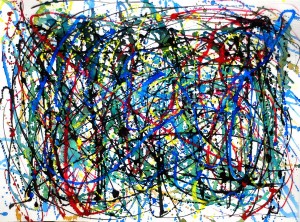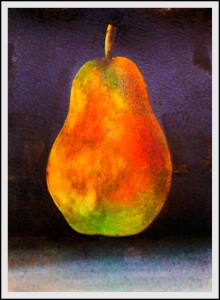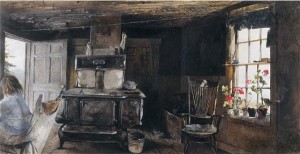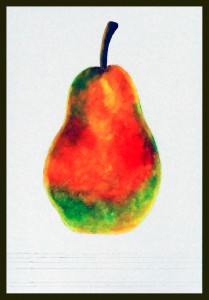More color was added onto the watercolor study. This time blue gouache was diluted and painted on. The color of the gouache together with the watercolor underneath gives an illusion of distance and death to the painting. I will add more layers of color to experiment a variety of effect to this abstract painting technique. Lots of fun.
Category Archives: Watercolor Exercise
Watercolor painting – Dry Brush Study – Pear
I have finished this watercolor dry brush study with much struggle. First of all, the watercolor paint when applied to the paper surface was not as easily controlled as I thought. Direction of the watercolor paint was easily seen and are difficult to cover or made smooth. I tried to apply the watercolor paint in layer after layer and for some areas, it is too thick and for others, too thin that the bottom color show up. It could be the choice of paper to use. I have choosen to use 140 lb cold press watercolor paper for this study but I think a 300 lb hot press might be better. Sometimes the brush was too wet that the bottom layer was disturbed. Overall, I found that a control of the amount of water in the brush is most important and so is the weight of the paint brush on the paper. I found that this technique requires lots of patience, time and experimenting.
Watercolor painting – Study of dry brush technique
I have recently read an article written by Peter V. Nielsen on drybrush technique. The title of the article is Drybrush – a watercolour technique explored by Andrew Wyeth. I find it very interesting that Andrew Wyeth divide his watercolor into plain watercolor and dry brush. He might start with plain watercolor techique but changes partly or fully into this more expressive dry brush technique. After I read Peter Nielsen’s article and the Wood Stove painting by Andrew Wyeth in 1962, I want to try this myself but could not find much information on the web about this technique.
Then I found a site by an artist in Trento Italy called Ottorino De Lucchi. He has develope a dry brush technique over the years which allows the painting to maintain the brightness of the watercolor. I saw his paintings on the web and it amazes me with the detail and brightness of it that I want to try it myself. So I read his article on the technique which he generously share and started with a small study of a pear. I have started with the dry brush technique he mentioned with layers and layers of dry color right from the palette but the result was needless to say, quite disappointing. I have put layers upon layers of color to build it up as in Ottorino’s instruction but still I am not happy with the result. I found that this technique is very time consuming and I have much to learn and to study about this dry brush watercolor technique. Nevertheless I will try to finish this study in a few days and keep it as reference for my future watercolor technique. Well, here it is showing my unsuccessful attempt on learning the dry brush technique. I will write about it tomorrow and show my finish watercolor study tomorrow.
Watercolor Wash Painting Lesson – Wet into wet wash
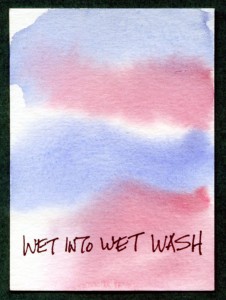
Watercolor Wet into Wet Wash Lesson
Last night I did some practice on my watercolor wash. It is so important to know the different kind of wash and what it will do for you when you do a painting. First one I did was the wet into wet wash where you wet and saturate your watercolor paper with clean water, then wait for it to dry to a certain point and paint on it with fully loaded juicy watercolor. The effect is shown above.

